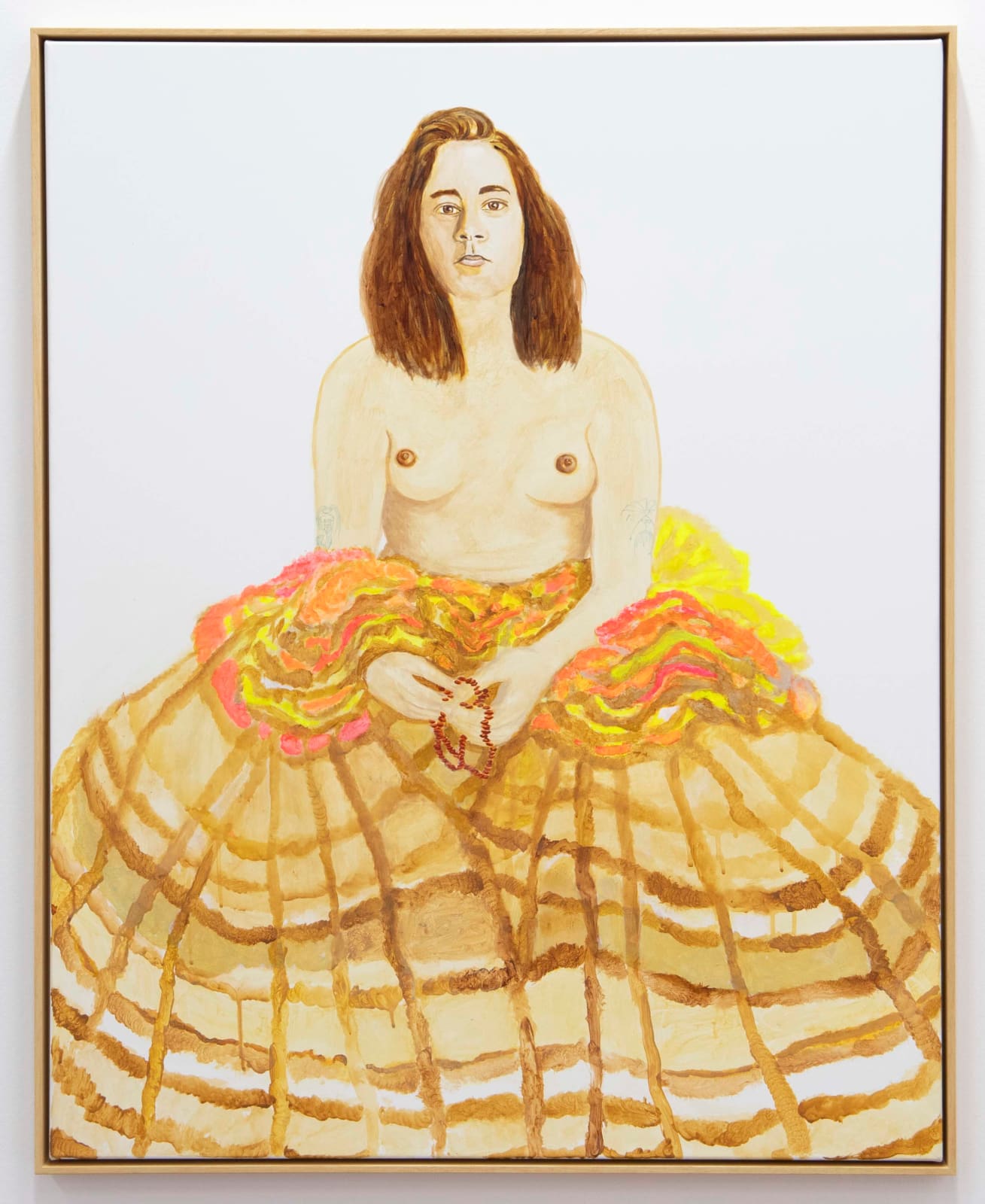Joan Ross
Kidjerikidjeri, 2025
synthetic polymer paint on canvas
100.4 x 80 cm
Joan Ross is known for confronting Australia’s colonial history through her interdisciplinary practice. She won the 2017 Sulman Prize and is a three-time Archibald finalist. This year, her subject is...
Joan Ross is known for confronting Australia’s colonial history through her interdisciplinary practice. She won the 2017 Sulman Prize and is a three-time Archibald finalist. This year, her subject is First Nations curator Coby Edgar.
‘I don’t do a lot of portraits, but when I decide to attempt one, I want the sitter to be involved, because the way we see ourselves is important,’ says Ross.
‘Coby is a friend. A strong, straight-talking Gulumerridjin (Larrakia) woman and an amazing writer, she recently co-curated my show at the National Portrait Gallery, which I couldn’t have done without her.
‘The title Kidjerikidjeri (willy wagtail) is her given name. Coby is a queer woman and the bright red and orange symbolises this. I had the idea of portraying her in a colonial dress. She suggested it be pulled down to the waist to emulate the portraits of her ancestors, photographed by Paul Foelsche in the 1800s. Her body is painted in a wash of ochre and the tattoos were designed by and represent people in her family. She chose to hold red seeds that her ancestor Billiamook gifted to the first colonials. I have used hi-vis (as I often do) as a stamp of colonisation to show that it’s a stain on us all.’
‘I don’t do a lot of portraits, but when I decide to attempt one, I want the sitter to be involved, because the way we see ourselves is important,’ says Ross.
‘Coby is a friend. A strong, straight-talking Gulumerridjin (Larrakia) woman and an amazing writer, she recently co-curated my show at the National Portrait Gallery, which I couldn’t have done without her.
‘The title Kidjerikidjeri (willy wagtail) is her given name. Coby is a queer woman and the bright red and orange symbolises this. I had the idea of portraying her in a colonial dress. She suggested it be pulled down to the waist to emulate the portraits of her ancestors, photographed by Paul Foelsche in the 1800s. Her body is painted in a wash of ochre and the tattoos were designed by and represent people in her family. She chose to hold red seeds that her ancestor Billiamook gifted to the first colonials. I have used hi-vis (as I often do) as a stamp of colonisation to show that it’s a stain on us all.’
1
of
8






